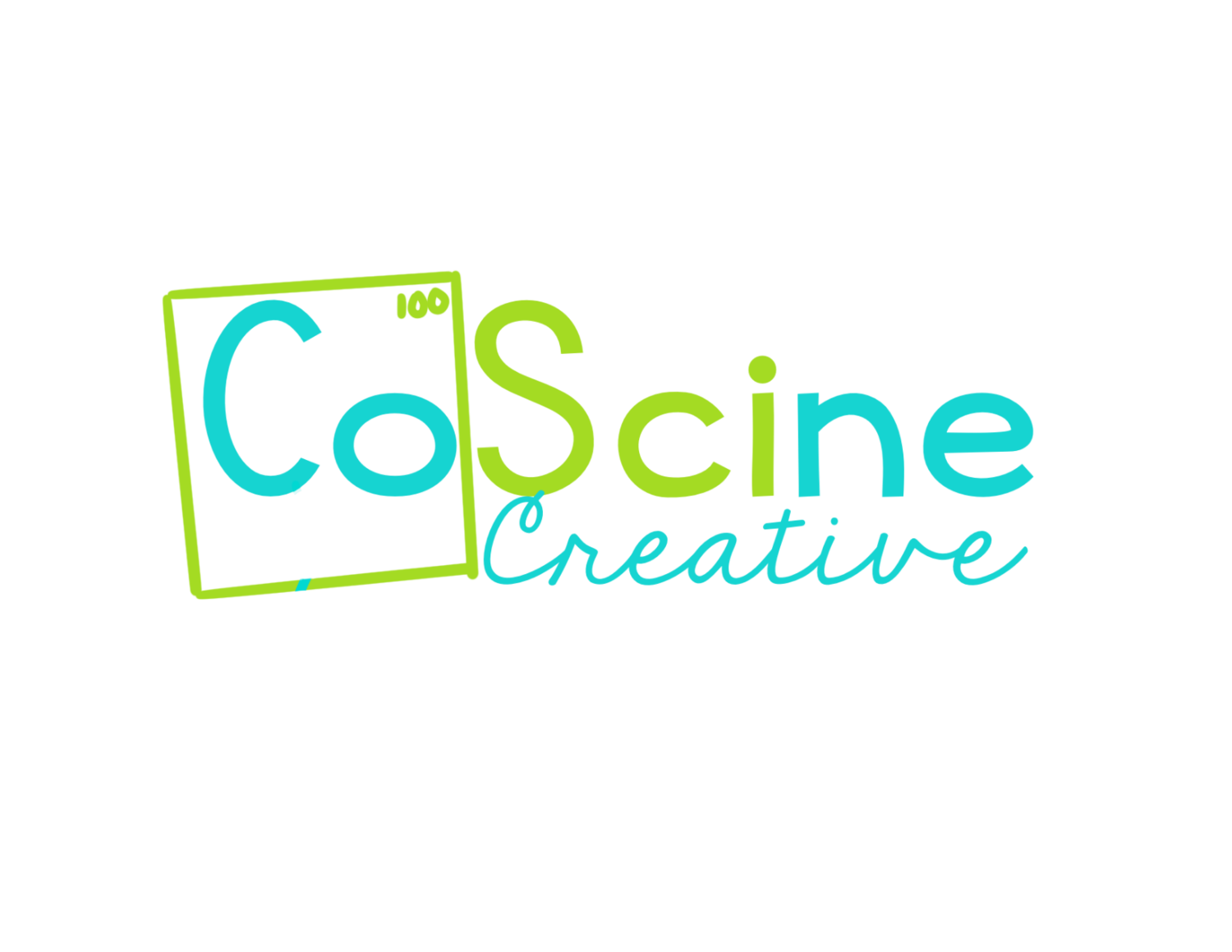13 Ways to Teach New Information in Chemistry
Are you stuck in a teaching rut? Do you have a constant monologue in your head wondering if students are getting everything they need out of your lessons? Have you been starting each new topic off in the same way?
Your class has been going along fine, but one day you notice that you are getting a lot more "Can I go to the bathroom?", "Are we going to do anything fun in here today?", and "What time do we get out of this class?" questions.
Those are barely veiled neon signs for “I'd rather flip my eye lids inside out than sit through the rest of this class.”.
So tell your students to flip their eye lids back to normal, sit up straight, and get ready to learn because you are about to turn that teaching rut into a teaching groove with these ideas.
#1 Start with a Virtual Field Trip
Have you always wanted to tour Chernobyl for your nuclear chemistry chapter? Or tour a pharmaceutical company when teaching students how to name chemical compounds? What about taking them on a mining tour when introducing metals in the periodic table?
All these are possible with virtual field trips. Just keep in mind that this shouldn't just be a video activity. This should also be a hands on learning experience, so have some metal pieces to sort through or empty common pharmaceutical bottles to label in between virtual tour videos.
Also, don't forget to make it fun. Some Hershey's gold nuggets would be a great themed treat for the mining tour. As for the pharmaceutical tour, why not fill those bottles with M&Ms or Skittles?
#2 Add in Cross Curriculum Learning
Team up with the art teacher and have her show your students some shading or design tips using doodle notes. Or do an oil and watercolor paint project to show solubility rules. Learn about salt painting and how it applies to absorption and solubility.
The sky is the limit. All you need to do is pick a chapter and sit down with the art teacher and see what you can come up with. Don't forget to tag me on Instagram with your learning innovations.
If art isn't working for you, team up with the history teacher or biology teacher or the FACS teacher. (My fudge or hot chocolate lessons would be perfect for teaming up with the FACS teacher.)
#3 Add in a Group Activity
Teenaged students love to interact with each other. They live for interaction. Use this fact to make learning a little more interesting for them by having them work together on an activity.
Want to 10x your engagement? Make it a competition. After teaching the basics of writing chemical formulas, have students use this race activity to sharpen each other’s skills. They love it because they can interact, learn, and trash talk each other all at the same time.
You’ll love it because they are engaging with you, the material, and each other. It makes a really fun learning experience.
#4 Add in a Web Quest
Do you have a group of students that are really really not into your lessons? Do they write notes and play on their phones constantly, but then say "But, you didn't tell us that!" when it comes to quiz day?
Here is a strategy you can use to gently and effectively remind students that they need to pay attention when you are talking.
On a difficult topic, have students do a webquest. This shows them that by taking the time to explain things during the lesson, you are helping them out.
They still learn, but they will realize that you make learning easier on them through your explanations.
The day after the webquest, take 5 minutes to review their answers and they will listen. Make sure you point out how quickly they understand when you are able to explain things as you move through the information with them.
#5 Add in a Visual or Demo
Nothing can grab attention like a visual, interactive, or edible demonstration.
That's because you are taking an invisible science and making it tangible.
To demonstrate solubility rules you can put magnesium sulfate (Epsom salt) and water together and show nothing happens. But, when you add in calcium chloride-white out! A snow globe appears in your test tube.
Ask students if the magnesium sulfate just came back out of the solution. Then start your lesson by explaining the solubility rules. (Free solubility rules chart)
Use the periodic table coloring activities explained here to show how useful and diverse the periodic table is.
Go big with this and they will be leaving your classroom telling your future class periods the fun that awaits them in your class.
#6 Start with a Poll
Polls are a great way to start a chemistry lesson because you can use them to review or gauge the prevalence of a common misconception.
You can ask,"What grade do you expect to get in this class?", "How much do you study at home?", or "What was the most difficult chapter so far?". These questions can help you plan future lessons. You can also put sample test questions up to see how ready they are.
Use PollEverywhere.com to set up your polls. Students can text in simple responses or you can have them type in A, B, C, or D. Be careful when having free responses. Sometimes students can type inappropriate responses for attention, distracting from your lesson.
The best part about doing polls is that you can have your students take out their phones complete the poll activity, and then after the poll instruct students know to put their phones away. This removes the "But, you didn't tell us we couldn't use our phones today!" argument.
#7 Add in a Video
Videos are a great way to introduce a new topic or show a demonstration that is too messy or expensive, but attention getting.
Don’t use these to teach the topic. Use them as an attention-getters. I really like The Organic Chemistry Tutor and Crash Course for their educational chemistry videos. My favorite is @being_chemist on Instagram because they post great experiment videos.
If you want 30 second clips that teach, check out some of my TikTok and Reel style chemistry videos. Here's one for molar mass, cations and anions, protons and neutrons, balancing equations, ion dipole forces, and more being made each week.
Try any of those out or create your own videos that fit your classroom style.
#8 Start with a Digital Activity
Digital activities are the most simple step by step instruction you can use while still guiding. I have a molar mass digital activity and a quantum numbers digital activity in my store right now. In the molar mass activity students are able to interact with molar mass in a way that is not possible with any other medium.
Students drag the elements off the periodic table. Then they drag the molar mass numbers off of the elements. Then they add everything together. Students are guided through the calculations in a way that is just not possible when working with pencil and paper.
The same is true for the quantum number digital activity. Students get to interact with each quantum number and what it represents in full color. Then students are guided through how to find the quantum numbers through charts that make it simple.
Using digital activities like these will not only transform your engagement, but also the deepen level of understanding students will achieve.
#9 Start with an Article
Does your chemistry lesson tie in with a hot topic that has been blowing up the news? Great! Pick an article out and have students analyze and critique it from a chemical perspective.
Just about anything can be tied to chemistry from oil spills, to new drug discovery, to laundry. Have students exercise their knowledge and see just how practical chemistry can be.
This is one of the best ways to answer, "When are we ever going to use chemistry?"
To prove or disprove the "fake news" that surrounds us.
#10 Start with a Career Application
Pull out a recipe and show students how they are using stoichiometry, measurement, pH, solubility, or the knowledge of chemical compounds in baking.
Pull out a DHEC certificate or agricultural license and show students the need to understand water pH and chemical compounds when farming or planning to build.
Pull up an article on making soap for being an Etsy craft seller.
Pull up a pool maintenance plan and show the importance of pH and measuring water quality for personal pools or for a hotelier.
Chemistry can be applied everywhere.
#11 Start with an Anchor Chart
There are so many ways that doodle notes can be used besides as guided notes and one of the alternatives is to use them as anchor charts.
Either take the file to a print shop and enlarge the doodle notes, or pass out printed doodle notes out to students and have them redraw them larger on poster board.
This would be a great cross-curricular activity with the art teacher. When this is done in with the art teacher involved, they are so much better done, but it just depends on the time you have to spend on a project line this.
Assign student groups to complete the charts and then use them throughout the year. Or, use them as an introduction or review for the chapter.
You can see all the available doodle notes to turn into anchor charts here.
#12 Add in an Engaging Worksheet
Lecture and PowerPoints are useless to students without the ability to put it into practice. Don't forget to incorporate as much engaging practice as you can into your lessons. If the worksheets are interesting or have a twist, so many more students will complete them.
Doodle notes* illustrate chemistry on a molecular level that we just can’t see without serious technological help. They are very engaging because students can understand the abstract things you were just explaining.
Even if you are not a doodle note fan, there are many engaging worksheets that offer practice for students such as this molar mass worksheet. Students who have had enough practice will perform so much better in your class.
#13 Flip Your Classroom
Are you about to teach a topic that typically stumps students? Do you feel like every time you teach the lesson they don’t even listen because they are so panicked?
Why not flip your classroom for that lesson? Have students watch the lesson at home and then work with you in class on understanding.
This will maximize your class time and everyone needs more class time.
Don't get overwhelmed with this list. Pick out one or two and give them a try when you start hearing lots of irrelevant questions during your class. Just one or two adjustments can reengage students and get everyone on the right track.
My favorite is using the doodle notes with the art teacher to make cross curricular lessons or anchor charts.
Check out those links if you need a creativity boost.
Which one are you going to implement?















